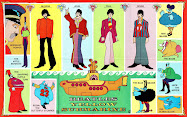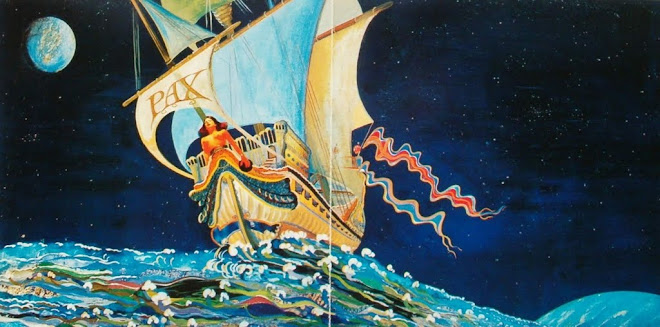THE BEATLES REMASTERED
14-album Stereo Reissue Set
Apple/Capitol/EMI
If you’re been resisting the Beatles Remastered in Stereo package and you’re an audiophile, you’re missing out on a memorable sonic experience.
Please Please Me
With The Beatles
A Hard Day's Night
Beatles For Sale
Help!
Rubber Soul
Revolver
Sgt. Pepper's Lonely Hearts Club Band
Magical Mystery Tour
The Beatles
Yellow Submarine
Abbey Road
Let It Be
Past Masters
It's finally happened, similar to the recent Disney reissue of the classic animation features such as Snow White on Blu-ray, we now have the entire recorded catalog of the Beatles beautifully remastered on 14 single and double-CD enhanced CD albums, complete with 13 mini-documentaries on the recording of each album, as well as provided on a separate DVD - so you don’t have to put each CD into your computer to view them. A dedicated team of engineers at Abbey Road Studios in London spent four years using state of the art technology plus renovated vintage studio equipment to maintain the authenticity and integrity of the original analog recordings. There is also a separate Beatles Remastered Mono Set, gathering together all the Beatles recordings that were mixed for mono release (the stereo market was a small niche when most of the albums were originally released). It includes the mono album of both “Help,” and “Rubber Soul,” which have never been released on CD before. There are those Beatles fans who feel that the mono mixes are superior in every way to the early stereo versions, so let them indulge themselves in those if they wish.
I must say I held off on even requesting the stereo set for review since I had several of the albums in the excellent Mobile Fidelity reissues, plus a few British Parlophone vinyls of some of the originals such as Sgt. Pepper. Then I began to hear fellow audiophiles rave about the superb fidelity of these reissues and I decided to check into them. While I’m disappointed they were not released as hybrid SACDs like the Stones series, I’m bowled over by stunning results of the remastering to standard CD. They seem to come alive; one hears small details completely lost in all of the earlier CD transfers. I carefully compared the new reissue CDs to the Mo-Fi vinyls, using my highly tweaked SOTA turntable. I don’t really have any notes to consult, because the two sources sounded almost completely identical. The only obvious differences were observed when the level was turned way up and surface noise and rumble identified the vinyl vs. the CDs, or when the vinyl reach the last track close to the enter label, and the high frequencies began to be muffled vs. the clarity of the reissue CDs.
It was amazing how creative the Beatles and their producer George Martin were technically, considering they were restricted only to primitive four-channel recorders, and later on (by going to a more advanced studio than EMI) eight-track. Often they had to mix from one four-channel master to another to create more flexibility, and thus put all their vocals on one track, using the other three for additional instrumentals. Thus all the voices occasionally come out of just the left or right channel, but the newly-remastered versions often ameliorate this a bit by giving more of a center fill.
The original EMI tapes were in good shape, but the remastering engineers had to deal with a slight build up of dust. They transferred at 192K/24-bit via a Prism A-D converter. They removed electrical clicks, vocal pops on the mikes, excessive sibilance and bad edits, as long as it didn’t interfere with the original integrity of the songs. De-noising technology was used sparingly, with less than five of the 525 minutes of music subjected to the process. It was decided to use limiting only moderately so as to retain the original dynamics of the recordings. It is most satisfying to note that these reissues are not being compress to hell like most pop music on CD today. Comparisons were made with the earliest vinyl pressings as well as the original master tapes continuously during the remastering and equalization process.
While my set didn’t come with the boxed set detailed historical notes, booklets and posters, it had everything else. The only album without the Enhanced CD mini-documentaries is the double-CD Past Masters set. The short documentaries use mostly the “Ken Burns” zooming around effect on stills of the Beatles, but the soundtracks have comments by the various members and George Martin which give some background on the recording of the particular album. Some of the studio chat by the Beatles has never been heard before. Four of the albums are furnished in stereo on CD for the very first time: Please Please Me, With the Beatles, A Hard Day’s Night, and Beatles for Sale.
I became a Beatles fan originally with their Revolver album, and on the mini-documentary George Martin and the members talk about how working on that one opened up more sophisticated and complex tunes than they had ever created before. Without the creativity and wizardry of Martin the Beatles would probably never have achieved the high levels they did, but at the same time Lennon and McCartney should be recognized as among the greatest pop song writers of the century.
I should mention another aspect of this reissue of special interest to all surround sound fans: The Beatles stereo recordings have long been mined for surround sound effects (also Crosby, Stills & Nash and the Beach Boys.). I think part of their abilities in this area must be due to the simple miking and four-track recordings they were working with. The fact is most of them have a tremendous amount of L-R difference information embedded in the stereo signals, which can be easily decoded. I started many years ago with a simple single speaker in the back, hooked up to a Hafler derived surround circuit (connecting an efficient speaker to the two + terminals of an amp). Then I progressing to a Dynaco box. Now we have ProLogic IIx, which does an even better job of deriving surround ambience from the L-R information on standard stereo recordings. You will frequently hear a single guitar in one of the surround speakers, for example, or a chorus of voices coming from behind you during a portion of a tune. Since the stereo source is now so much cleaner and hi-res, you will get even better pseudo-surround effects using ProLogic or Circle Surround decoding.
If you’re been resisting the Beatles Remastered in Stereo package and you’re an audiophile, you’re missing out on a memorable sonic experience - even if you have a bunch of the best Beatles vinyls and a good turntable. This is a fabulous Beatles Bonanza.
- John Henry, Audio Audition
Happy New Year - Abba
4 days ago










.jpg)



No comments:
Post a Comment